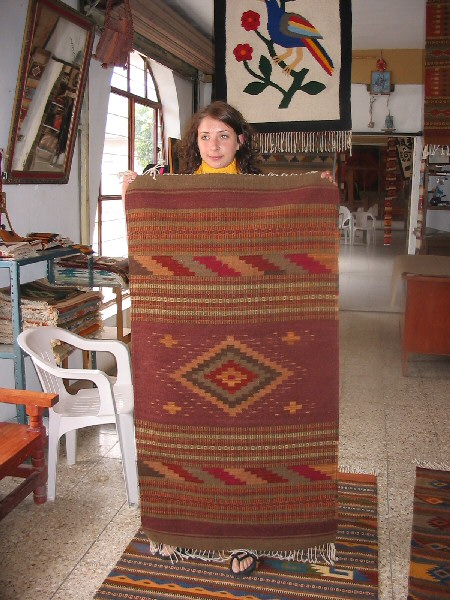
|

|
Throughout the poorer states such as Oaxaca and Chiapas in most cases markups are not all that lofty on products such as textiles, pottery and wooden carvings relative to the time spent in production or for resale; craftspeople and retailers alike want to get by and maintain a lifestyle rather than being intent upon raising socio-economic status at the expense of their patrons. The latter aspiration is the exception rather than the norm.
Prices asked of Canadian and American tourists are not as inflated as they perhaps were three or four decades ago. And the same tends to hold true for Mexican consumers in the marketplace. For example, at the corner store products are often marked up not by 100%, but rather only 25%. By contrast, at your hometown 7-11 you know that you're paying dearly for the luxury of being able to walk to the corner for necessities. Not so in Oaxaca. Here the difference between corner store prices and supermarket prices is often negligible ---- because the corner store operator is likely not paying tax, because he is content with making an average wage of perhaps 200 pesos (16 USD) a day, and because that's what the market will bear.
Oaxacans are aware that many tourists aren't as wealthy as they used to be. Media reports of America's recent financial woes filter down to Mexicans of virtually every rank. They have a greater respect for and understanding of their northern neighbors than used to be the case. Thus, since vendors don't want to lose a sale, in most cases their starting prices do not tend to be grossly exaggerated.
Regarding crafts in particular, with a local economy suffering from slow tourism resulting from people's misguided perception of danger and drug wars throughout all of Mexico, these days in Oaxaca craftspeople and market vendors can't afford to start off too high; saving face dictates not dropping the price dramatically, and accordingly it cannot be too inflated to begin with.
I agree that the idea of looking at a product and asking yourself what it's worth to you and what you think it should cost is a good way to approach buying. If the asking price is too high based on this evaluation, it may be appropriate to re-evaluate whether or not to proceed with the ultimate purchase. The objective should not be, in my personal opinion, to get something for as little as possible, at least not in 21st century southern Mexico. What I often do is consider whether paying 20 pesos more will affect my life in any way, and the corollary of whether paying 20 pesos more will help the vendor to get by.
There's value in considering the concept of helping others with much less, who are truly suffering because of weak tourism or a more generalized anemic local economy, versus getting the lowest price possible. Do you want to feel better about yourself? Or would you prefer that at the end of the bargaining session you sense a bit of personal guilt for squeezing the vendor to the limit? Do you want to take advantage of unequal bargaining power?
Notwithstanding reports about Mexico's economic growth, there's a new reality in Oaxaca and elsewhere throughout the southern part of the country. Embrace it and do the right thing.
Alvin Starkman first visited Oaxaca in 1968. He has been a resident of the southern Mexico UNESCO World Heritage Site since 2004. Together with his wife Arlene he operates Casa Machaya Oaxaca Bed & Breakfast and with Chef Pilar Cabrera Oaxaca Culinary Tours. Alvin has written over 270 articles about Oaxacan life and cultural traditions.